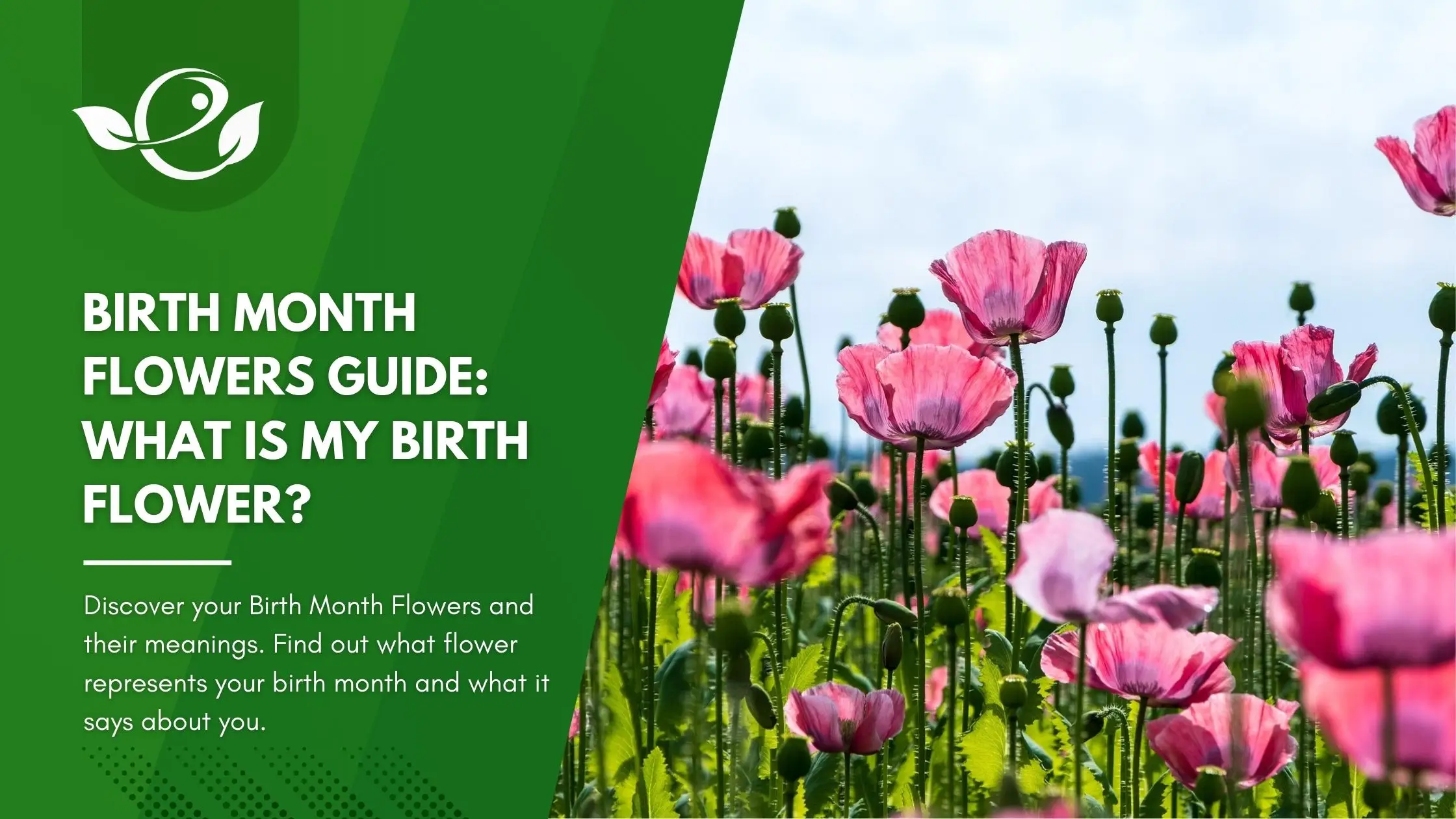Table of Contents
What Are Birth Month Flowers?
Birth month flowers are emblematic blooms that represent the month in which you were born. Rooted in centuries-old traditions, these flowers have been imbued with symbolism, folklore, and personal meaning. Originally tracing their origins back to ancient civilizations—from the ritualistic practices of the Romans and Celts to the sentimental symbolism of the Victorian era— birth flowers have also evolved into a modern cultural phenomenon in the United States. Today, they serve as a personal signature of identity and are a popular motif in gifts, jewelry, décor, and even garden design.
The Cultural Significance of Birth Month Flowers
In modern culture, birth month flowers have become much more than mere symbols of nature. They inspire personal narratives and establish a connection between individuals and the natural world. Here are some key reasons why these flowers hold a special place:
- Gifting Tradition: Birth flowers are often used as thoughtful gifts that carry meanings of love, hope, and renewal.
- Gardening Inspiration: Home gardeners are increasingly interested in growing plants with meaningful backstories, and many turn to their birth month flowers for this inspiration.
- Personal Expression: Many people choose to incorporate their birth flower into fashion, accessories, or home décor as a celebration of their identity.
- Decorative Trends: Florists and interior designers frequently use birth flowers in weddings, seasonal displays, and personalized design projects.
When you explore your personal connection with your birth month flower, you embrace not only the aesthetics of nature but also its storied past and layered symbolism.
The Detailed Guide to Birth Month Flowers
Below is an in-depth look at the birth month flowers for each month. For every month, we describe both the primary and secondary flowers, discuss their unique characteristics, and provide practical insights that connect historical significance with modern-day application.
January Birth Flowers
Primary Birth Flower: Carnation

- Description: Carnations are cherished for their ruffled petals and sweet fragrance. Available in an array of colors, each hue carries a specific meaning: red signifies deep love, pink expresses gratitude, white symbolizes innocence and luck, while yellow may denote disappointment.
- Cultural Significance: With a history spanning over two millennia—dating back to ancient Greece and Rome—carnations have been revered for their beauty and used extensively in celebrations and ceremonial events.
- Gardening Tips: Carnations thrive in full sun to partial shade and require well-drained, fertile soil. Their versatility makes them ideal for flower beds, borders, and even cut flower arrangements.
Fun fact: Carnations are edible and have a sweet, spicy flavor. They are often used in teas, desserts, and as garnish.
Secondary Birth Flower: Snowdrop

- Description: Snowdrops are delicate, bulbous perennials that emerge through the winter’s chill, heralding the arrival of spring with their pure white, drooping blooms.
- Symbolism: Often seen as symbols of hope and new beginnings, snowdrops are associated with purity and the promise of better times ahead.
- Growing Advice: Prefer partial shade and moist, organically rich soil. Snowdrops are excellent for naturalizing in woodland gardens, creating a gentle transition from winter to spring.
According to your birth flowers, if you were born in January, we picture you as someone who loves intensely and passionately. You’re likely a fiercely loyal and protective friend, and you probably hold family in the highest regard.
February Birth Flowers
Primary Birth Flower: Violet

- Description: Violets are known for their enchanting, heart-shaped leaves and small, vibrant flowers, available predominantly in shades of purple, though white and yellow varieties exist.
- Historical Context: Revered by ancient civilizations, violets have been used in culinary recipes, medicinal potions, and even perfumery. They also feature prominently in art and literature, symbolizing modesty and spiritual wisdom.
- Cultural Symbolism: Violets are strongly associated with modesty, faithfulness, and deep, sometimes secret, expressions of love.
- Cultivation Tips: These charming blooms do best in partial shade to full sun and require moist, well-draining soil.
Fun fact: Violets are edible and can be used to make tea, syrup, and candied flowers.
Secondary Birth Flower: Primrose

- Description: With clusters of pastel-hued blossoms, primroses are among the first flowers to herald the arrival of spring.
- Symbolism: Often representing new beginnings and youthful innocence, primroses inspire hope and renewal.
- Growing Suggestions: Plant primroses in areas with partial shade and humus-rich, moist soil. They flourish in cool, temperate climates and make lovely additions to borders and woodland gardens.
February-born individuals are often described as honest, humble, wise, and innocent, suggesting they are pleasant companions.
March Birth Flowers
Primary Birth Flower: Daffodil
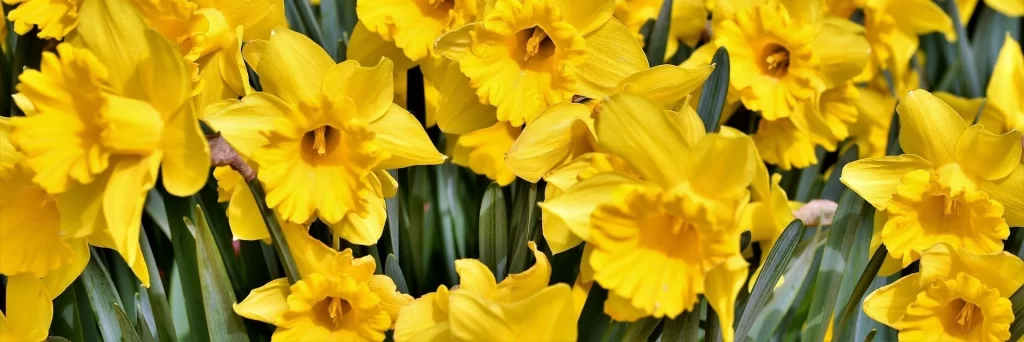
- Description: Fun Fact: In Greek mythology, the flower is entwined with the legend of Narcissus, emphasizing themes of self-love and transformation. Daffodils captivate with their bright, trumpet-shaped blooms and slender leaves. These perennial bulbs come in a range of colors—most commonly yellow—and have become synonymous with the onset of spring.
- Historical Significance: Celebrated since ancient times, daffodils symbolize rebirth, renewal, and the optimism that accompanies the end of winter.
- Practical Tips: Daffodils prefer full sun to partial shade and well-draining soil. They are ideal for naturalized lawns, borders, and rock gardens.
Fun Fact: In Greek mythology, the flower is entwined with the legend of Narcissus, emphasizing themes of self-love and transformation.
Secondary Birth Flower: Jonquil
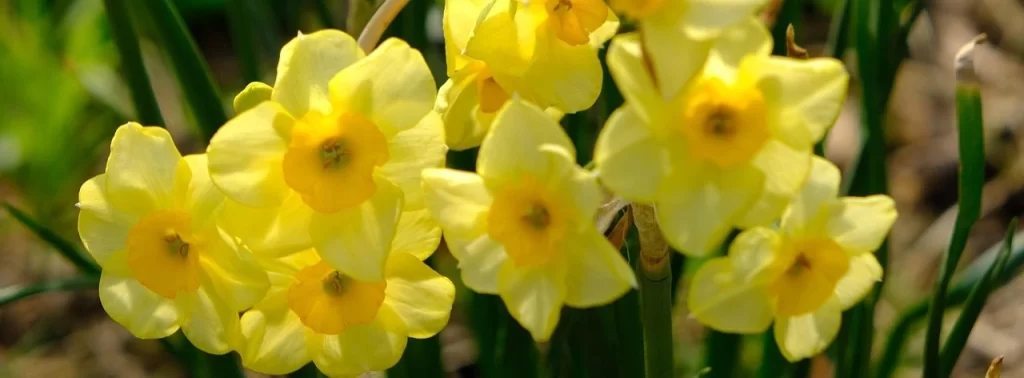
- Description: A variety within the Narcissus genus, jonquils are characterized by their small, fragrant, yellow blooms and rush-like foliage.
- Distinctive Features: While sharing a close kinship with daffodils, jonquils are often celebrated for their intense scent and delicate appearance.
- Meaning: Both flowers carry connotations of new beginnings, though jonquils add an extra layer of affection thanks to their sweet fragrance.
- Growth Advice: Similar to daffodils, jonquils thrive in sunny locations with fertile, well-drained soil.
People born in March are often perceived as happy, cheerful, and optimistic individuals who have a knack for lifting others’ spirits.
April Birth Flowers
Primary Birth Flower: Daisy

- Overview: Daisies are timeless and simple, evoking feelings of innocence and purity. Varieties like the English Daisy, Oxeye Daisy, and Shasta Daisy are popular choices that differ in size, bloom duration, and garden use.
- Symbolism: Commonly associated with loyal love, simplicity, and renewal, daisies are a favorite for conveying emotions of hope and fidelity.
- Cultivation: Daisies flourish in full sun or partial shade and can be easily incorporated into borders, rock gardens, or mixed flower beds. They are hardy, adaptable, and low-maintenance.
Daisies are actually two flowers in one! The outer petals (that look like white “petals”) are one flower, and the yellow center is made up of tiny individual flowers called disk florets. So when you give someone a daisy, you’re giving them a whole bouquet in disguise! 😄
Secondary Birth Flower: Sweet Pea

- Description: Known for their delicate, butterfly-like blossoms and captivating fragrance, sweet peas are climbing plants that add a lush vertical element to gardens.
- Cultural Meaning: Sweet peas typically represent delicate pleasure, friendship, and gratitude. Their enticing aroma makes them a popular choice for personal and gifting purposes.
- Growing Recommendations: Provide support with a trellis, and plant them in full sun to light shade with moist, well-drained soil. Their extended blooming season makes them ideal for prolonged spring and summer displays.
Daisies make wonderful gifts for April babies, and since some believe they symbolize fertility and motherhood, they’re also a popular choice for new moms.
May Birth Flowers
Primary Birth Flower: Lily of the Valley

- Description: Lily of the Valley features petite, bell-shaped, highly fragrant flowers set against dark green foliage. This perennial has been celebrated for centuries for its subtle beauty.
- Symbolism: It stands for purity, humility, and the return of happiness, often associated with the rejuvenation that comes in May.
- Historical Note: Beyond its ornamental appeal, Lily of the Valley has a storied presence in traditional medicine, though caution is advised due to its toxic properties if ingested improperly.
- Gardening Insights: Ideal for growing in partial to full shade with rich, moist soil, making it a superb choice for woodland or cottage gardens.
Lily of the Valley is known as the “May Lily” because it typically blooms in May—and in France, it’s a tradition to give sprigs of this sweet-smelling flower on May 1st (La Fête du Muguet) as a token of good luck and happiness! 🌸🍀
Secondary Birth Flower: Hawthorn
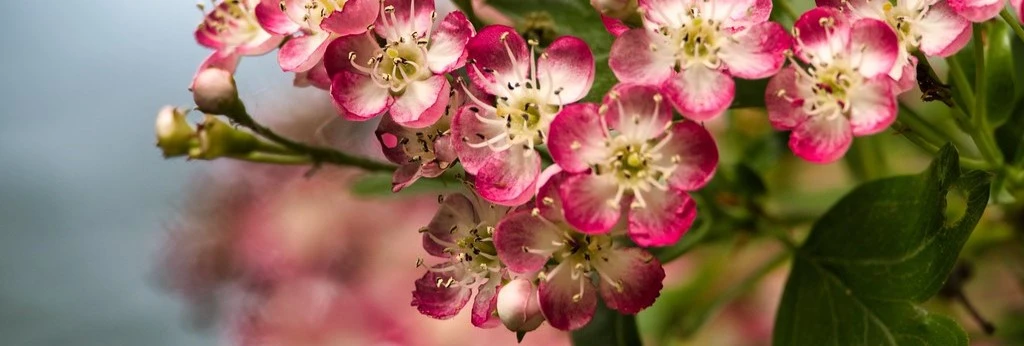
- Description: Hawthorn is a deciduous shrub or small tree known for its clusters of delicate blossoms and bright red berries.
- Symbolic Significance: It embodies protection, love, and fertility. Cultural lore often associates it with enchantment and warding off malevolent forces.
- Usage: Commonly used in hedging and as a feature plant in mixed borders, hawthorn adds an element of natural charm and subtle symbolism.
- Care Tips: Ensure it receives full sun to partial shade and well-drained soil. Its seasonal blooms can enliven gardens in late spring.
June Birth Flowers
Primary Birth Flower: Rose
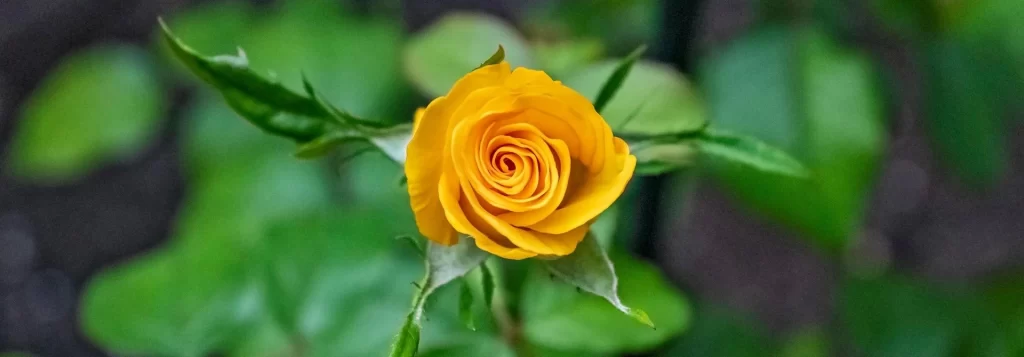
- Description: Roses are perhaps the most iconic of all flowers. They come in countless species and cultivars, each boasting an array of colors from passionate reds to serene whites.
- Historical and Cultural Impact: With a legacy that dates back thousands of years, roses have symbolized love, beauty, and devotion. Their multifaceted meanings vary by color, making them exceptionally versatile in floral language.
- Practical Advice: Grow roses in full sun with well-draining, fertile soil. Regular care, pruning, and pest management ensure their vibrant blooms and enchanting fragrance endure throughout the season.
- Fun Fact: They are the national flower of both England and the United States, underscoring their widespread cultural resonance.
Roses are edible! You can actually eat rose petals and rose hips (the fruit of the rose). They’ve been used for centuries to make rose water, teas, jams, and even desserts. Some gourmet dishes use rose petals for a fragrant, floral twist! Just make sure they’re pesticide-free before snacking.
Secondary Birth Flower: Honeysuckle
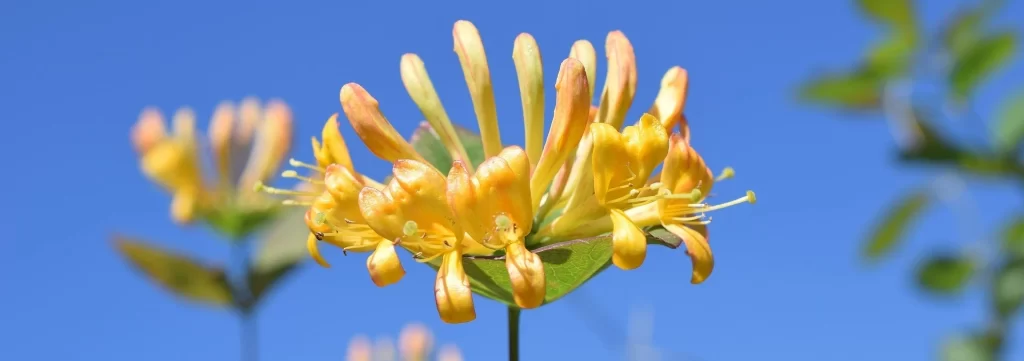
- Description: Honeysuckle is a climbing vine renowned for its tubular, fragrant flowers. It exudes a natural sweetness that complements the romantic imagery of June.
- Symbolism: Often representing devotion, affection, and protection, honeysuckle conveys messages of lasting love and happiness.
- Cultivation Tips: Plant in areas where full sun meets partial shade, with attention to well-draining soil. Its graceful tendrils and robust blooms make it an excellent addition to trellises and garden fences.
July Birth Flowers
Primary Birth Flower: Larkspur

- Description: Larkspur is known for its tall, spiky clusters of vibrant flowers that impart a feeling of lightness and grace.
- Symbolism: The delicate yet spirited bloom of the larkspur symbolizes levity, affection, and strong bonds of love.
- Usage in Gardens: Perfect for adding height and drama to borders, larkspur thrives in full sun and well-draining soil. It is an excellent focal point in both cottage and modern gardens.
- Growing Suggestions: With care, some varieties offer a second flush of blooms, extending their season of display.
In the language of flowers, Larkspur symbolizes an open heart and strong bonds of love—but here’s the twist: the color of the Larkspur changes its meaning! Pink stands for fickleness, white means joy, and purple signifies first love. So, it’s basically a floral mood ring!
Secondary Birth Flower: Water Lily
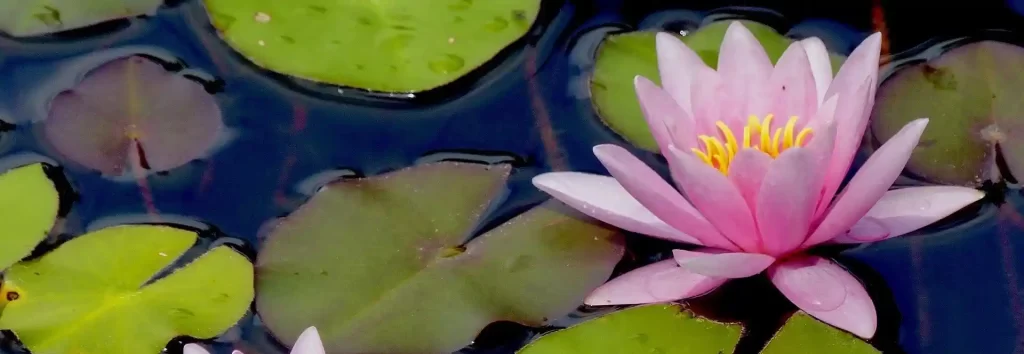
- Description: Water lilies are aquatic plants featuring large, rounded leaves and exquisite, floating flowers.
- Cultural Meaning: They evoke purity, enlightenment, and rebirth. Water lilies are often celebrated in art and poetry for their serene, reflective quality.
- Practical Growth Tips: Ideal for ponds, water gardens, or naturalizing near water features. They need still or slow-moving water and ample sunlight to flourish.
Let’s wager that people born in July are delightful and good-natured companions!
August Birth Flowers
Primary Birth Flower: Gladiolus

- Description: Gladioli, also known as sword lilies, stand tall with striking flower spikes and an impressive palette of colors.
- Symbolism: Representing strength, integrity, and infatuation, gladioli capture the resilient spirit of those born in August.
- Gardening Advice: Plant in full sun with well-drained soil. Staggered planting ensures a continuous display, making gladiolus a captivating showpiece in any summer garden.
- Historical Note: These dramatic blooms have long been favored for their ornamental value and versatility in floral arrangements.
🌸 Fun Fact about Gladiolus: The name Gladiolus comes from the Latin word gladius, meaning “sword,” because of its sword-shaped leaves! That’s why it’s also called the “sword lily.” In ancient Rome, gladiators were often showered with gladiolus petals after a victorious battle
Secondary Birth Flower: Poppy

- Description: Poppies display vivid, cup-shaped flowers and are renowned for their delicate structure and eye-catching allure.
- Symbolism: They embody imagination and dreams, with an added mystique that speaks of both ephemeral beauty and eternal remembrance.
- Uses: Often featured in wildflower meadows, borders, or as cut flowers, poppies thrive under sunny conditions and well-drained soil.
- Fun Facts: Poppies are used not only as decorative elements but also feature in culinary traditions, particularly in the form of poppy seeds.
August-born individuals are often characterized by strength, independence, and a fiery spirit. Interestingly, they are also associated with infatuation and remembrance, as represented by the flowers.
September Birth Flowers
Primary Birth Flower: Aster

- Description: Asters offer daisy-like blooms that burst in vibrant colors, ranging from soft pinks and purples to clean whites.
- Meaning: These flowers symbolize love, wisdom, and faith. Their extended blooming period makes them a welcome sight in late summer and early fall.
- Ideal Conditions: Asters grow best with ample sunlight and well-drained soil, making them a staple in borders and meadow gardens.
- Cultural Relevance: Often used to inject a burst of color into the garden when many summer blooms begin to fade.
Fun fact: Asters are known as the “stars of the fall garden”. Their name actually comes from the Greek word “aster,” which means “star”—thanks to their star-shaped flower heads. Their name actually comes from the Greek word “aster,” which means “star”—thanks to their star-shaped flower heads. Asters have a long history of medicinal and culinary use and have been used to treat everything from headaches to snake bites.
Secondary Birth Flower: Morning Glory

- Description: Morning glories are fast-growing annual vines characterized by their funnel-shaped blossoms, which unfurl in brilliant colors each morning.
- Symbolism: They represent fleeting beauty and the poignant nature of unrequited love, as their blooms gracefully close by afternoon.
- Garden Tips: Plant in full sun with loose, fertile soil. Their vigorous growth makes them ideal for trellises and as a natural screen for garden areas.
The seeds of the morning glory flower contain LSA (lysergic acid amide), a naturally occurring compound with hallucinogenic properties that may induce mild psychoactive effects if ingested.
October Birth Flowers
Primary Birth Flower: Marigold

- Description: Marigolds captivate with their rich hues of orange, yellow, and red. Their strong, slightly spicy fragrance adds an extra layer of allure.
- Historical Context: Used in numerous cultural ceremonies—including traditional celebrations in Mexico—marigolds convey warmth, creativity, and positive energy.
- Practical Guidance: Thrive in full sun and tolerate a range of soil conditions, making them versatile choices for borders, container gardens, and mixed plantings.
- Symbolism: They epitomize the vibrant spirit of autumn, evoking feelings of enthusiasm and cheerful resilience.
One important fact about the Morning Marigold flower is that its natural scent and chemical compounds have been found to help repel common garden pests. Gardeners often use marigolds as a companion plant because they produce substances that deter insects such as aphids, beetles, and even certain soil-borne nematodes.
Secondary Birth Flower: Cosmos

- Description: Cosmos flowers feature delicate, daisy-like petals arranged around a prominent central disk, available in a spectrum of colors.
- Meaning: They symbolize harmony, balance, and modesty. Cosmos are particularly valued for their long blooming season and their role in attracting pollinators.
- Cultivation Tips: Best grown in full sun with well-drained soil, cosmos are easy to maintain and naturally self-seed, ensuring an enduring display of color.
People born in October are likely to be passionate, hardworking, and driven.
November Birth Flowers
Primary Birth Flower: Chrysanthemum

- Description: Chrysanthemums, or mums, boast a dazzling array of shapes, sizes, and colors. They have deep cultural roots and are highly versatile in floral arrangements.
- Significance: Symbolic of joy, optimism, and longevity, chrysanthemums are celebrated particularly in Eastern cultures and have found a special place in U.S. floral traditions.
- Care Advice: They require full sun and well-drained soil. With diligent care, mums provide robust displays in the late summer to fall transition.
- Cultural Note: In some cultures, chrysanthemum colors are attributed specific meanings, which can range from deep passion (red) to purity (white).
Chrysanthemums boast a wide array of colors, each carrying its own unique symbolism. Overall, however, they generally symbolize friendship, honesty, and joy.
Secondary Birth Flower: Peony

- Description: Peonies are lush, full blooms known for their fragrant, large blossoms and captivating textures.
- Symbolism: Representing prosperity, romance, and honor, peonies are a favorite for wedding arrangements and celebratory occasions.
- Growing Conditions: Thriving in full sun to light shade and well-drained soil, peonies are prized for their longevity—with some plants flourishing for decades.
- Historical Insight: Celebrated in Chinese art and revered as the “king of flowers,” peonies have a storied past that adds an additional layer of allure.
One important fact about the peony flower is its deep cultural significance, especially in China. Known as the “king of flowers,” the peony has long symbolized wealth, honor, good fortune, and prosperity. It appears frequently in art, literature, and festivals, serving as a representation of both beauty and status in traditional Chinese culture.
December Birth Flowers
Primary Birth Flower: Paperwhites

- Description: Paperwhites are a type of daffodil, distinguished by their star-shaped, delicate white blooms and sweet fragrance.
- Symbolism: They evoke themes of purity, rebirth, and new beginnings, particularly as they are forced to bloom indoors during winter.
- Modern Usage: Commonly used during the holiday season, paperwhites brighten indoor spaces when many other blooms are dormant.
- Cultivation Guidance: Best grown in bright, indirect light with well-draining soil, they can be forced indoors—a popular practice that underscores their seasonal significance.
Secondary Birth Flower: Holly

- Description: Holly is recognized for its glossy, spiky leaves and vibrant red berries, making it a staple of winter décor.
- Symbolism: It signifies protection, good luck, and eternal life. The deep cultural associations with Christmas further elevate its status.
- Gardening Tips: Holly can be grown as a shrub or small tree and thrives in full sun to partial shade. Its dense foliage not only adds aesthetic value but can also serve as a natural barrier.
- Historical Anecdote: From ancient Celtic traditions to modern holiday celebrations, holly’s enduring presence in lore reinforces its place as a beloved winter emblem.
You may also like: 20 Plants Featuring Elegant Black and White Flowers
Why are there 2 birth flowers per month?
There are two birth flowers for each month to offer more variety and provide a personalized connection to nature. This duality came about because different cultures and traditions developed their own lists of representative flowers for each month, and over time these lists merged. Having two options allows people to choose the flower that best reflects their personality or the particular traits they connect with, whether it’s based on appearance, fragrance, or symbolic meaning. Additionally, seasonal variations in blooming can mean one flower may be more readily available or have a longer blooming period in certain regions, making the choice even more versatile.
Conclusion
Birth month flowers are more than just beautiful botanical specimens—they are living symbols of identity, heritage, and seasonal transformation. Whether you’re drawn to the timeless elegance of a rose, the cheerful promise of a daffodil, or the subtle charm of a violet, each bloom carries a wealth of history and meaning. Embracing your birth flower not only celebrates your unique journey but also connects you to a tradition that bridges ancient lore with modern self-expression.
We invite you to explore and incorporate these natural symbols into your everyday life—through gardening, art, and heartfelt gifts—and to share your personal story of how your birth flower has inspired you.
